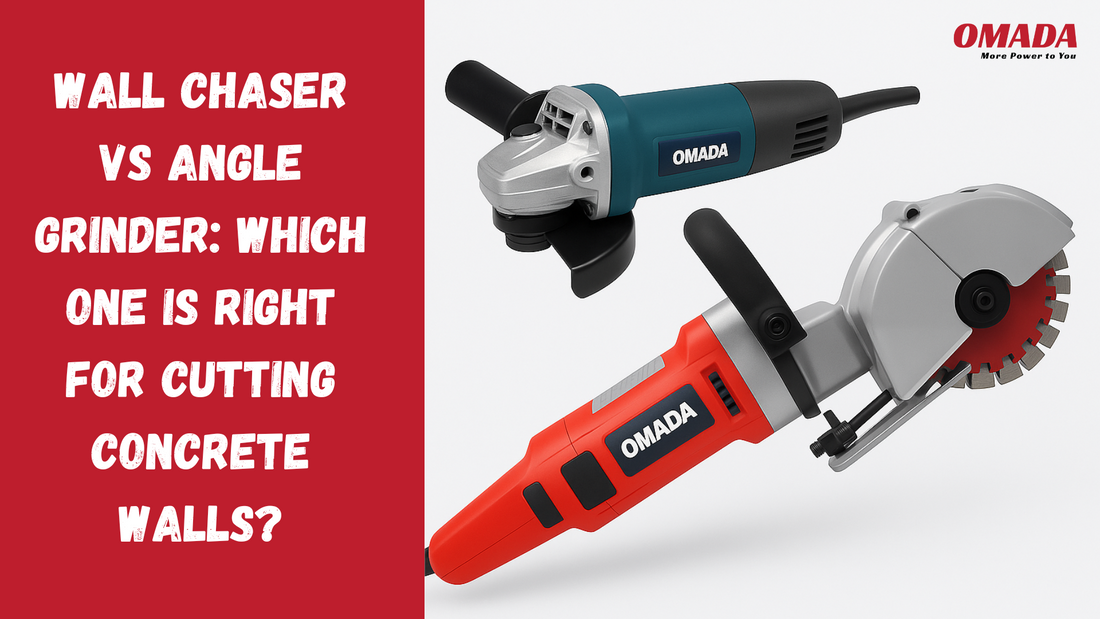
Wall Chaser vs Angle Grinder: Which One Is Right for Cutting Concrete Walls?
Share
Cutting into concrete isn’t something you do with just any tool. Whether you're installing electrical conduits, laying plumbing, or adding structural elements, the right equipment can save you hours of labor—and a lot of frustration.
Two common options often come up: the wall chaser and the angle grinder. Both are capable of cutting into concrete, but they serve slightly different purposes. So, how do you choose between them? Let’s break it down.
What Is a Wall Chaser?
A wall chaser is a specialized power tool designed specifically to cut narrow grooves or channels in concrete, brick, or plaster walls. It typically comes with dual diamond blades that can be adjusted to control the width and depth of the cut. This makes it ideal for tasks like embedding electrical cables or pipes neatly within walls.
What Is an Angle Grinder?
An angle grinder, on the other hand, is a more versatile tool. It's commonly used for grinding, polishing, and cutting through various materials—metal, tile, and concrete included. It uses a single rotating disc, which can be swapped out depending on the job.
While not designed specifically for wall chasing, many DIYers and even professionals use angle grinders for smaller or one-time concrete wall jobs.
Wall Chaser vs Angle Grinder: The Key Differences
Let’s get practical. Here’s how these tools compare across some important factors:
1. Precision and Clean Cuts
- Wall Chaser: Delivers parallel, even cuts with adjustable depth and width. Ideal for making symmetrical grooves for conduits.
- Angle Grinder: Harder to control the depth and width manually. Good for rough cuts or trimming edges.
2. Dust Control
- Wall Chaser: Most models, like the ones from Omada’s power tool line, include built-in dust extraction. Huge plus for indoor work.
- Angle Grinder: Typically lacks dust control, unless modified with an external vacuum shroud.
3. Ease of Use
- Wall Chaser: Slightly bulkier but designed for the task. Takes a bit of getting used to, but much easier for cutting long, straight lines.
- Angle Grinder: Lighter and more compact. Easier to handle, but tougher to control depth and direction over long runs.
4. Versatility
- Wall Chaser: Purpose-built. Great for one job—cutting grooves in walls.
- Angle Grinder: Can cut, grind, polish. One of the most flexible tools in any kit.
5. Cost
- Wall Chaser: Generally more expensive, especially with dual blades and dust collection.
- Angle Grinder: More affordable and widely available.
So, Which One Should You Choose?
If your main goal is to cut clean, consistent channels into concrete or brick walls, a wall chaser is hands-down the better choice. Tools like the Omada Wall Chaser are built for this specific job, and you’ll notice the difference in finish and speed.
But if you're tackling a one-off project or need a tool that can do more than just chase walls, a good quality angle grinder—like the Omada 100mm or 125mm Angle Grinder—can get the job done, especially with the right diamond blade attachment.
Final Thoughts
Both tools have their place in the toolbox. Think about your specific project needs: Is it a clean groove in a finished wall? Go with the wall chaser. Are you just roughing out a section of concrete or cutting odd shapes? An angle grinder will do just fine.
And whichever route you go, make sure to wear proper safety gear and take dust seriously—it’s not just a mess, it’s a health risk.
